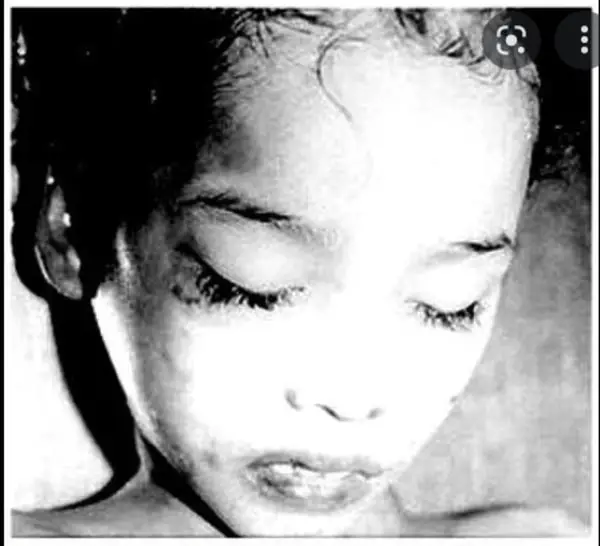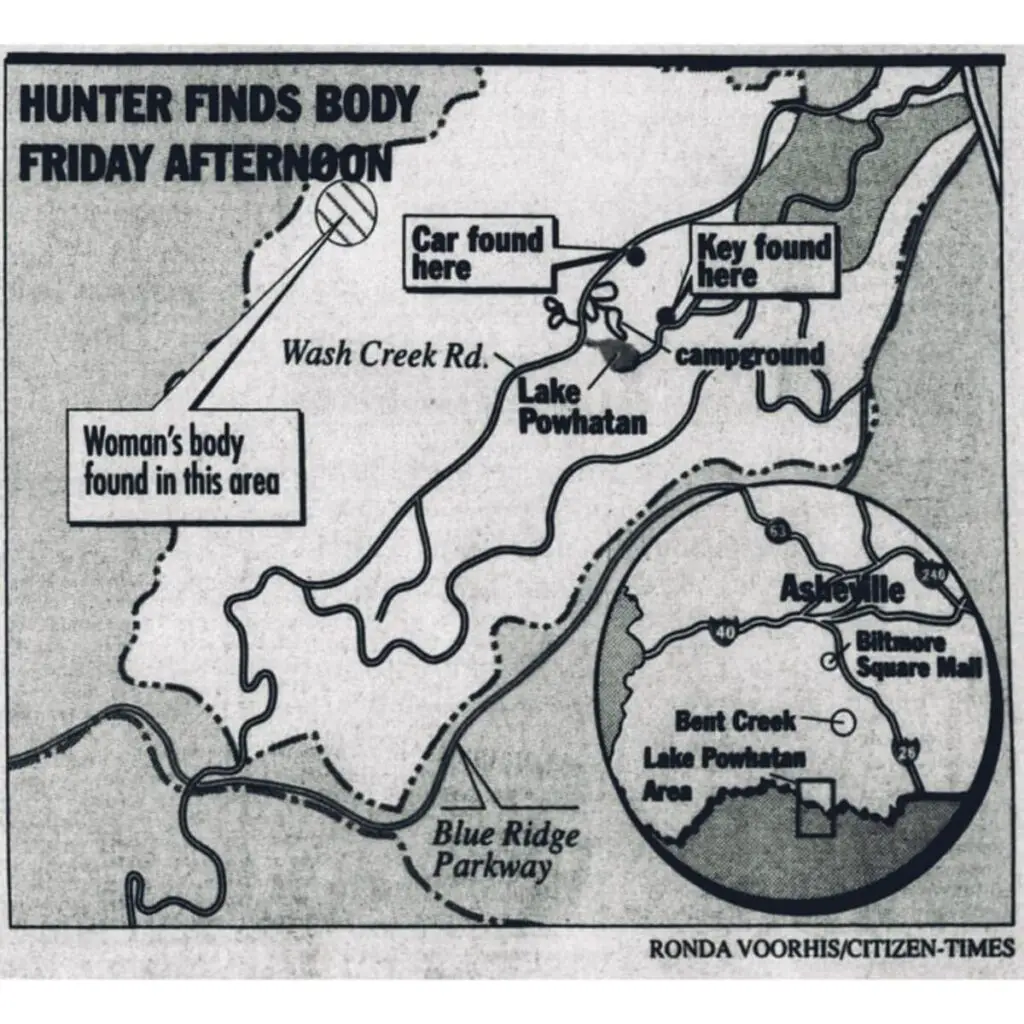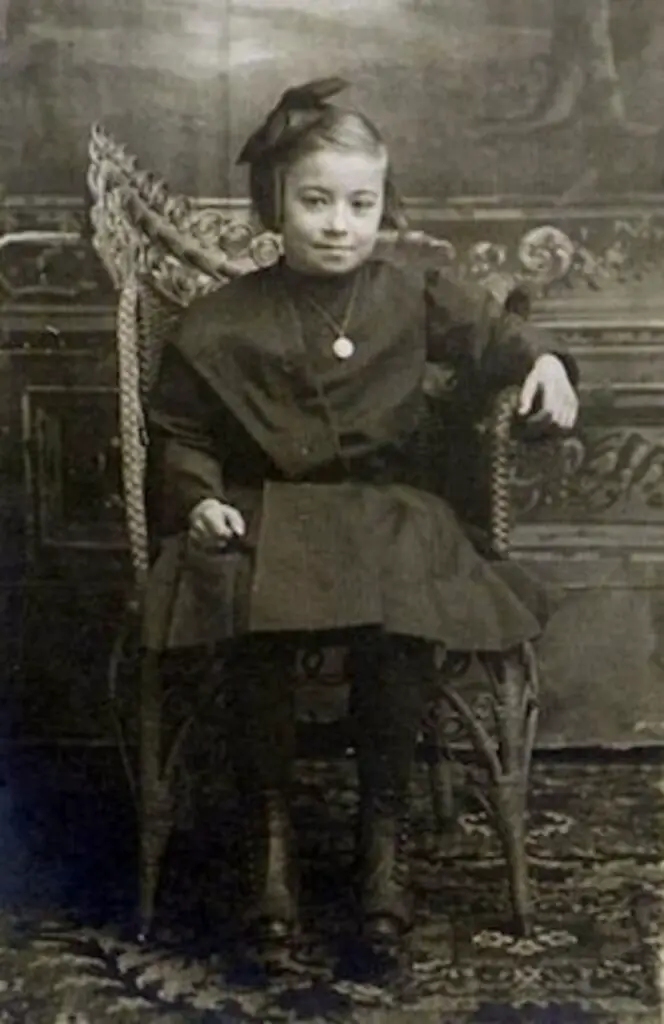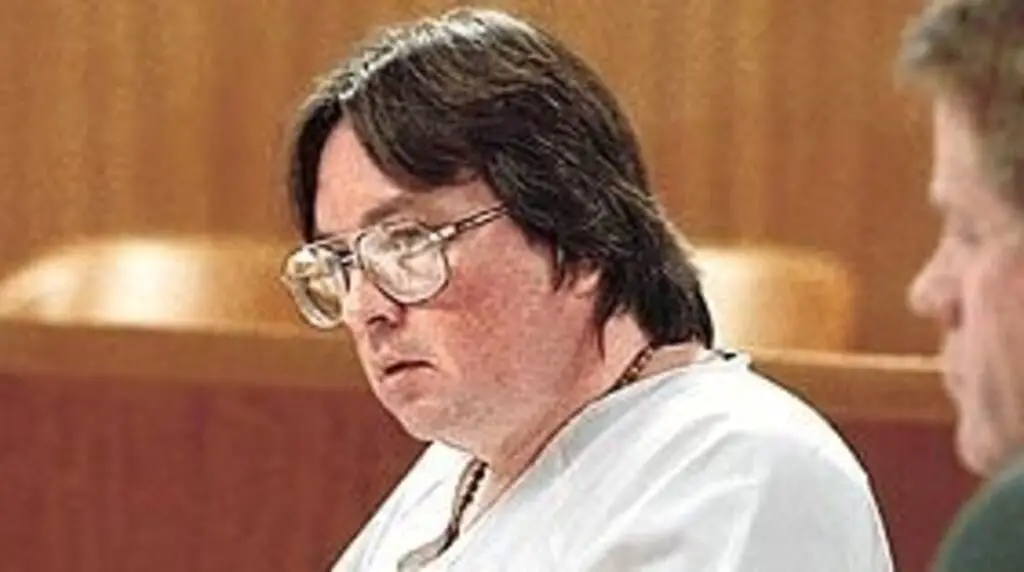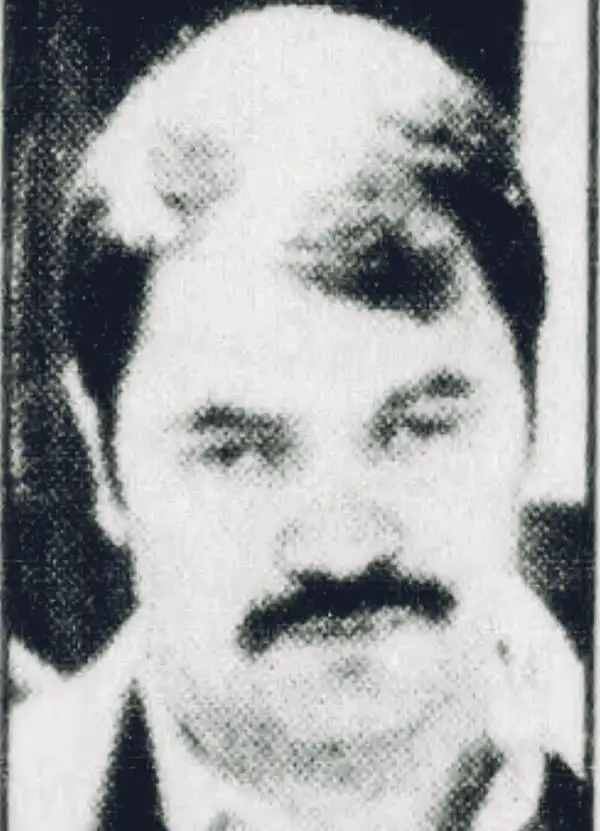Dale Gibbs awoke to banging on the door of her parents’ home in Ripley, Mississippi, in the early hours of May 15, 1970, just three days before her 19th birthday.
Her husband, Phillip, a 21-year-old senior at Jackson State College, was expected to return that night after making the nearly four-hour drive from campus. But he wasn’t banging on the door. It was Phillip’s sister, Nerene, and a neighbor.
Nerene was screaming.
Phillip Gibbs had been shot and killed by police on Jackson State’s campus in a 28-second barrage of more than 400 bullets. The officers had arrived after someone set fire to a dump truck during mounting tensions between students at the Black college and White motorists who drove through it. Firefighters extinguished the fire, but the officers inexplicably turned and marched a couple of blocks deeper into the campus, stopped in front of Alexander Hall, a women’s dormitory, and opened fire. They shot students in front of the dorm and others through the dorm’s glass windows.
Phillip Gibbs was one of the onlookers.
James Earl Green, a high school senior, was also shot and killed on the other side of the street while walking home from his job at the Wag-a-Bag corner store. Twelve more people were shot and injured, while countless others were left with physical and psychological trauma.
That terrible night, Dale Gibbs told The Marshall Project – Jackson 55 years later, she was determined to go back to sleep, hoping it was all a dream.
Her husband was gone. Their infant son, Phillip Jr., would grow up without a father. And there would be no justice. No one was ever charged.
“They murdered my husband, and they murdered James Green, and they got away with it,” she said. “After you reach that 30-to-40-year mark, you lose hope.”
Unbeknownst to Dale Gibbs, the Department of Justice opened an investigation into the killings under the Emmett Till Unsolved Civil Rights Crime Act, during the first Trump Administration, according to department documents.
But now, the future of that federal investigation is unclear. Though the department has made no public statement about the status of the remaining Till Act cases, policy changes under the second Trump Administration and the mass resignation of attorneys within the Civil Rights Division appear to threaten both the future of this investigation and the division as a whole.
Dale Gibbs, 72, at her home in Arizona. Her husband, Phillip, was killed in the Jackson State shooting in 1970, leaving her a widowed mother of two.
As of the Justice Department’s 2024 annual report, the investigation was one of two that remained open from Mississippi. The other was the death of Jerry Lee Armstrong, a 17-year-old who went missing after a Christmas dance in DeSoto County. His family believes white supremacists killed him.
The Till Act, first passed in 2008, directs the Justice Department to investigate criminal civil rights violations that led to a death before 1980.
Of the 162 victims on the Justice Department’s Till Act list, 56 were killed in Mississippi from 1955 through 1977, including the law’s namesake, Emmett Till. White men abducted and killed Till, a Black 14-year-old who was visiting family in Money, Mississippi, after a White woman falsely accused him of accosting her in a store. They brutally beat him, shot him and tied a cotton gin fan around his neck with barbed wire before dumping his body in the Tallahatchie River. An all-White jury acquitted the two men charged with his murder. They would later confess in a magazine interview.
John Lewis, a civil rights leader who was elected to the U.S. House of Representatives from Georgia, introduced the Till Act in 2007, “because there are hundreds, perhaps even thousands, of cold cases from the civil rights era that have never been solved,” he told TIME.com. Lewis was a year older than Till, and the murder left a lasting impact on him.
Since the department began investigating civil rights cold cases, at least five have led to convictions.
However, the Trump Administration has instituted sweeping changes that raise questions about the division’s future.
After taking office Jan. 20, President Donald J. Trump ordered the Justice Department to freeze all civil rights litigation. Days later, career attorneys in the Civil Rights Division were reassigned to a working group on sanctuary cities. The department also cut grants that included $1 million to Louisiana’s Orleans Parish District Attorney for investigating cold case homicides involving civil rights violations.
Earlier this month, Harmeet Dhillon, the Assistant Attorney General overseeing the Civil Rights Division, issued new mission statements, shifting the division away from protecting marginalized groups and toward some of the president’s priorities, such as anti-transgender measures and preventing voter fraud. The Civil Rights Division has recently seen an exodus of around 70% of its lawyers, according to reporting by The Guardian.
“The division is now focusing on protecting the people who this White House prefers,” said Stacey Young, a former Justice Department lawyer and founder of Justice Connection, a network of agency alumni that provides resources, including legal counsel and mental health services. “Their new enforcement priorities, which they’ve made very clear, are trying to tamp down on antisemitism, on anti-Christian bias and on efforts to advance gun control.”
This division has been the enforcement arm of many of the laws born from the civil rights movement of the 1950s and 60s, in which Black people fought to be treated as equals. The laws also laid the groundwork for an expansive list of protections, including against age and gender discrimination.
Oneshia Herring, former chair of the Department of Justice’s Association of Black Attorneys and a former attorney in the Civil Rights Division, said the administration’s selective enforcement of the law is “running against the very nature and spirit of which these laws were created.”
Phillip Gibbs and James Earl Green’s names first appeared on a 2019 list of investigations opened under the Till Act, but survivors and people close to the case told The Marshall Project – Jackson that they were unaware of the investigation until recently.
Phillip Gibbs, a Jackson State student, left, and James Earl Green, a high school student at center, were shot and killed by police on May 15, 1970. At right, a monument honoring Gibbs and Green erected on the campus.
Jackson State University Professor Robert Luckett, who hosts the university’s annual commemoration of the shooting, learned of the investigation late last year. In January, the U.S. Attorney for the Southern District of Mississippi, a Biden appointee who was responsible for overseeing the case, resigned ahead of President Trump’s inauguration.
The Department of Justice did not respond to requests for comment on the investigation. The Emmett Till law website remains active. Other department web pages were removed after Trump’s inauguration, including its database tracking federal law enforcement misconduct and all state-level hate crime data.
Lynch Street, a busy thoroughfare that bisected the Jackson State College campus, became a hotbed of racial tension throughout the 1960s. White drivers headed downtown would hurl racial epithets at students and hit at least one student with a car. Black students and “corner boys,” young men who hung around the campus, sometimes threw rocks at the drivers.
After another bout of rock-throwing on May 13, 1970, police closed the street. The next night, the rock-throwing started up again. Around the same time, someone had taken a dump truck, driven it up Lynch Street, and set it on fire near Stewart Hall, the boys’ dorm.
The Jackson Police Department, Mississippi Highway and Safety Patrol and firefighters arrived on campus.
The officers were heavily armed, with equipment “more suited to warfare than crowd control,” said historian Nancy K. Bristow, author of “Steeped in the Blood of Racism: Black Power, Law and Order, and the 1970 Shootings at Jackson State College.” There were shotguns, officers’ personal weapons, armor-piercing bullets and “Thompson’s Tank,” a truck retrofitted with heavy armor and mounted machine guns.
The firefighters extinguished the dump truck without incident. As the National Guard arrived at Stewart Hall to relieve the officers, the Jackson policemen and the highway patrol inexplicably turned and marched deeper into the campus, stopping in front of Alexander Hall, the women’s dormitory.
Gailya Porter, a sophomore, had been in her room at Alexander Hall when she heard that police were on campus. She and her roommate, Gloria Mayhorn, got dressed and went outside to check it out.
She joined the crowd of onlookers and tried to figure out what was happening.
She watched and listened to the echoing footsteps of the officers, surprised that they had gone past the boys’ dorm and were headed her way.
Officers commandeered the street and urged students to go back to their dorms. Some students yelled back at the police, but all retreated behind a chain-link fence.
What happened in the seconds before the shooting is heavily disputed. Officers made the unlikely claim of a sniper, which historian Bristow called “laughable.” Porter said that could not have happened. Then-U.S. Sen. Walter Mondale, D-Minn., bristled at the defense.
“Every time there’s an overreaction, that unfound sniper always gets the blame,” he said while touring the campus in the aftermath of the shootings.
Instead, students and other eyewitnesses reported a glass bottle crashing near the officers before they opened fire on the crowd.
“We weren’t a rowdy group,” Porter recalled. “We weren’t doing anything to cause that kind of reaction to a group of youngsters, especially at the girls’ dormitory… Would that have occurred at some other university at the girls’ dorm?”
She recalled suddenly feeling as if a bunch of bee stings had hit her.
When the shooting stopped, Porter got up from the ground, bleeding. She had been wounded by shrapnel, pellets, glass and debris that tore into her legs and arms. Her roommate, Mayhorn, was shot in the shoulder and burned by ricocheting bullet fragments on her scalp and back.
“People were screaming and hollering, ‘Why did this happen? Why did you shoot us?’” Porter said.
Porter did not return for summer classes, but would eventually go back to finish her degree, still feeling “angry, disappointed, unloved,” and wondering why.
Phillip Gibbs never got the chance to return.
A fog settled over his widow, who spent countless hours curled in the fetal position on her parents’ sofa. Walking into his funeral, she froze behind the casket. Her feet wouldn’t move, she recalled.
“It was awful,” she said. “Here I am, 18 or 19 and I had this little baby. What am I going to do?”
About two months later, she was snapped out of her fog with unexpected news: she was pregnant with a second son who would grow up without his father. At 19, she was to become a widowed mother of two.
Dale Gibbs shows a photo of her late husband, Phillip, on her phone.
The Jackson State shooting had been investigated a handful of times in the 1970s, but criminal and civil investigations never held anyone accountable.
Hours after the shooting, Jackson Mayor Russell C. Davis appointed a biracial committee of five local lawyers to investigate the incident. Their report concluded that there was no evidence that the crowd threatened officers. It criticized the highway patrol, which it said had been involved in three deaths on campus in recent years and should no longer be used for riot control within the city of Jackson.
A month after the shooting, President Richard Nixon’s Commission on Campus Unrest’s report concluded that “the 28-second fusillade from police officers was an unreasonable, unjustified overreaction” and “clearly unwarranted.”
State and federal grand juries were convened but returned no indictments. The families of the victims and some of the survivors of the shooting filed a civil lawsuit, but an all-White jury ruled against them. On appeal, the U.S. Fifth Circuit Court of Appeals found that the “barrage of gunfire far exceeded the response that was appropriate,” but that the plaintiffs could not sue the state and local governments, their officials and law enforcement personnel for money because all were protected by a legal doctrine called sovereign immunity. The U.S. Supreme Court refused to hear the case in 1975 and later denied a petition for a rehearing.
Porter, who was not part of the lawsuit, said she wasn’t surprised at the outcome of the case.
“That was just the times,” she said.
Historians say racism and white supremacy were deeply entrenched in the system at every step of the way. Students encountered officers who would count over their radios how many “n-words” were shot. And in the courtrooms, a law-and-order narrative prevailed, accepting officers’ exaggerated claims and painting the students as criminals.
“My clients were invisible when they stood before a White, racist judge,” Constance Slaughter-Harvey, who represented Dale Gibbs, James Earl Green’s mother and survivors of the shooting in the civil lawsuit, told The Marshall Project – Jackson.
U.S. District Court Judge William Harold Cox, who was openly racist, called the Jackson State students anarchists and militants and vowed to protect peace officers from intimidation by such “lawless” groups. Cox had previously referred to Black people attempting to register to vote as “a bunch of” n-words in open court.
As a young lawyer, Slaughter-Harvey represented many victims of police brutality. She began to know the violent officers by name and recalls being called the n-word in court.
Fifty-five years after the Jackson State shooting, she doesn’t expect much in the way of justice.
“The judicial system is an albatross around the necks of Black people,” she said. “I don’t expect anything to happen.”
The all-White Mississippi Highway and Safety Patrol that responded at Jackson State that day in 1970 had a reputation for brutalizing Black residents, and had killed on the campus before.
Inspector Lloyd Jones, known to many as “Goon,” for his violence, led the force that night.
Slaughter-Harvey said she deposed Jones on at least 15 separate occasions, relating to his involvement in police brutality cases. He also confessed to shooting “the n—er,” Benjamin Brown, who was killed while walking through Jackson State’s campus in 1967. Jones, who was shot and killed at his house in 1995, went on to become the Simpson County sheriff and a mentor to Rankin County Sheriff Bryan Bailey, whose deputies called themselves the “Goon Squad,” as they brutalized Black residents. Those deputies were convicted of civil rights violations last year by the Department of Justice.
“Without the Civil Rights Division enforcing these laws, who will?” asked Herring, the former chair of the Department of Justice’s Association of Black Attorneys.
Decades have gone by for Dale Gibbs, now 72 and living in Arizona. As the time passed, so did her hope for justice. But the news of the Till Act investigation brought some renewed hope.
“I know it’s a shot in the dark, but I’m hopeful,” she said. “Someone should pay, even if it’s just to recognize that what they did was wrong.”











